Service Alert
July 1 - Canada Day
CELA will be closed on Tuesday, July 1st for Canada Day. Our office will reopen and our Contact Centre services will resume on Wednesday, July 2nd. Enjoy your holiday!
CELA will be closed on Tuesday, July 1st for Canada Day. Our office will reopen and our Contact Centre services will resume on Wednesday, July 2nd. Enjoy your holiday!
Showing 1 - 20 of 53628 items
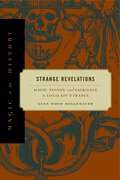
By Lynn Wood Mollenauer. 2006
The Affair of the Poisons was the greatest court scandal of the seventeenth century. From 1679 to 1682 the French…
crown investigated more than 400 people—including Louis XIV’s official mistress and members of the highest-ranking circles at court—for sensational crimes. In Strange Revelations, Lynn Mollenauer brings this bizarre story to life, exposing a criminal magical underworld thriving in the heart of the Sun King’s capital. The macabre details of the Affair of the Poisons read like a gothic novel. In the fall of 1678, Nicolas de la Reynie, head of the Paris police, uncovered a plot to poison Louis XIV. La Reynie’s subsequent investigation unveiled a loosely knit community of sorceresses, magicians, and renegade priests who offered for sale an array of services and products ranging from abortions to love magic to poisons known as “inheritance powders.” It was the inheritance powders (usually made from powdered toads steeped in arsenic) that lent the Affair of the Poisons its name. The purchasers of the powders gave the affair its notoriety, for the scandal extended into the most exalted ranks of the French court. Mollenauer adroitly uses the Affair of the Poisons to uncover the hidden forms of power that men and women of all social classes invoked to achieve their goals. While the exercise of state power during the ancien régime was quintessentially visible—ritually displayed through public ceremonies—the affair exposes the simultaneous presence of other imagined and real sources of power available to the Sun King’s subjects: magic, poison, and the manipulation of sexual passions. Highly entertaining yet deeply researched, Strange Revelations will appeal to anyone interested in the history of court society, gender, magic, or crime in early modern Europe.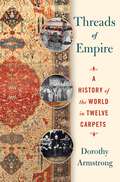
By Dorothy Armstrong. 2025
Carpet specialist Dorothy Armstrong tells the stories surrounding twelve of the world’s most fascinating carpets.Dorothy Armstrong’s Threads of Empire is…
a spellbinding look at the history of the world through the stories of twelve carpets. Beautiful, sensuous, and enigmatic, great carpets follow power. Emperors, shahs, sultans and samurai crave them as symbols of earthly domination. Shamans and priests desire them to evoke the spiritual realm. The world’s 1% hunger after them as displays of extreme status. And yet these seductive objects are made by poor and illiterate weavers, using the most basic materials and crafts; hedgerow plants for dyes, fibers from domestic animals, and the millennia-old skills of interweaving warps, wefts and knots.In Threads of Empire, Armstrong tells the histories of some of the world’s most fascinating carpets, exploring how these textiles came into being then were transformed as they moved across geography and time in the slipstream of the great. She shows why the world’s powerful were drawn to them, but also asks what was happening in the weavers’ lives, and how they were affected by events in the world outside their tent, village or workshop. In its wide-ranging examination of these dazzling objects, from the 5th century BCE contents of the tombs of Scythian chieftains, to the carpets under the boots of Stalin, Roosevelt and Churchill at the 1945 Yalta Peace Conference, Threads of Empire uncovers a new, hitherto hidden past right beneath our feet.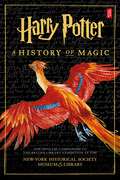
By British British Library. 2015
Harry Potter: A History of Magic is the official companion eBook to the special exhibition Harry Potter: A History of Magic…
that ran at the British Library in 2017 and New-York Historical Society in 2018. Explore the extraordinary subjects of the Hogwarts curriculum - Potions & Alchemy, Divination, Care of Magical Creatures, and more - and examine incredible historical artifacts, items from J.K. Rowling's personal archive, and stunning original artwork from Harry Potter series artists Mary GrandPré, Jim Kay, and Brian Selznick. This complete catalogue of the over 150 artifacts on display gives readers an up-close look at magical treasures from all over the world, and their inspiration on J.K. Rowling's magical inventions. Readers will be able to pore over ancient spell books, explore amazing illuminated scrolls that reveal the secret of the Elixir of Life, and through its unique design and functionality examine vials of dragon's blood, mandrake roots, painted centaurs and a genuine witch's broomstick. This special publication is an essential volume for all Harry Potter fans, history buffs, bibliophiles, and is a fascinating exploration of the history of the magic at the heart of the Harry Potter stories.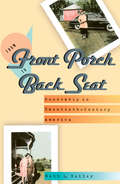
By Beth L. Bailey. 1988
From gentleman callers to big men on campus, from Coke dates to "parking," From Front Porch to Back Seat is…
the vivid history of dating in America. In chronicling a dramatic shift in patterns of courtship between the 1920s and the 1960s, Beth Bailey offers a provocative view of how we sought out mates-and of what accounted for our behavior. More than a quarter-century has passed since the dating system Bailey describes here lost its coherence and dominance. Yet the legacy of the system remains a strong part of our culture's attempt to define female and male roles alike.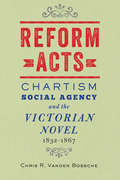
By Chris R. Vanden Bossche. 2014
How Victorian novels imagined the idea of social agency.Reform Acts offers a new approach to prominent questions raised in recent…
studies of the novel. By examining social agency from a historical rather than theoretical perspective, Chris R. Vanden Bossche investigates how particular assumptions involving agency came into being. Through readings of both canonical and noncanonical Victorian literature, he demonstrates that the Victorian tension between reform and revolution framed conceptions of agency in ways that persist in our own time.Vanden Bossche argues that Victorian novels sought to imagine new forms of social agency evolving from Chartism, the dominant working-class movement of the time. Novelists envisioned alternative forms of social agency by employing contemporary discourses from Chartism's focus on suffrage as well as the means through which it sought to obtain it, such as moral versus physical force, land reform, and the cooperative movement.Each of the three parts of Reform Acts begins with a chapter that analyzes contemporary conversations and debates about social agency in the press and in political debate. Succeeding chapters examine how novels envision ways of effecting social change, for example, class alliance in Barnaby Rudge; landed estates as well as finely graded hierarchy and politicians in Coningsby and Sybil; and reforming trade unionism in Mary Barton and North and South. By including novels written from a range of political perspectives, Vanden Bossche discovers patterns in Victorian thinking that are easily recognized in today’s assumptions about social hierarchy.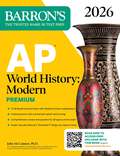
By John McCannon, Barron'S Educational Series. 2025
Be prepared for exam day with Barron&’s. Trusted content from AP experts! Barron&’s AP World History: Modern Premium, 2026 includes…
in‑depth content review and practice. It&’s the only book you&’ll need to be prepared for exam day. Written by Experienced Educators Learn from Barron&’s‑‑all content is written and reviewed by AP experts Build your understanding with comprehensive review tailored to the most recent exam Get a leg up with tips, strategies, and study advice for exam day‑‑it&’s like having a trusted tutor by your side Be Confident on Exam Day Sharpen your test‑taking skills with 5 full‑length practice tests–2 in the book, and 3 more online–plus detailed answer explanations and/or sample responses Strengthen your knowledge with in‑depth review covering all units and themes on the AP World History: Modern exam Reinforce your learning with AP style practice questions at the end of each unit that cover frequently tested topics from the chapters and help you gauge your progress Practice your historical thinking skills and making connections between topics by reviewing the broad trends (including governance, cultural developments and interactions, social interactions and organizations, and more) that open each section of the book Robust Online Practice Continue your practice with 3 full‑length practice tests on Barron&’s Online Learning Hub Simulate the exam experience with a timed test option Deepen your understanding with detailed answer explanations and expert advice Gain confidence with scoring to check your learning progress Looking for more ways to prep? Check out Barron's AP World History Podcast wherever you get your favorite podcasts AND power up your study sessions with Barron's AP World History on Kahoot!‑‑additional, free practice to help you ace your exam!Publisher's Note: Products purchased from 3rd party sellers are not guaranteed by the publisher for quality, authenticity, or access to any online entities included with the product.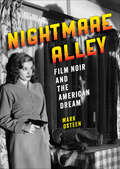
By Mark Osteen. 2013
Classic film noir offers more than pesky private eyes and beautiful bad girls—it explores the quest for the not-so-attainable American…
dream.Winner of the CHOICE Outstanding Academic Title of the Choice ACRLDesperate young lovers on the lam (They Live by Night), a cynical con man making a fortune as a mentalist (Nightmare Alley), a penniless pregnant girl mistaken for a wealthy heiress (No Man of Her Own), a wounded veteran who has forgotten his own name (Somewhere in the Night)—this gallery of film noir characters challenges the stereotypes of the wise-cracking detective and the alluring femme fatale. Despite their differences, they all have something in common: a belief in self-reinvention. Nightmare Alley is a thorough examination of how film noir disputes this notion at the heart of the American Dream.Central to many of these films, Mark Osteen argues, is the story of an individual trying, by dint of hard work or, more often, illicit enterprises, to overcome his or her origins and achieve material success. In the wake of World War II, the noir genre tested the dream of upward mobility and the ideas of individualism, liberty, equality, and free enterprise that accompany it.Employing an impressive array of theoretical perspectives (including psychoanalysis, art history, feminism, and music theory) and combining close reading with original primary source research, Nightmare Alley proves both the diversity of classic noir and its potency. This provocative and wide-ranging study revises and refreshes our understanding of noir's characters, themes, and cultural significance.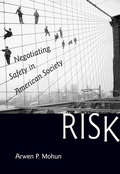
By Arwen P. Mohun. 2013
How have Americans confronted, managed, and even enjoyed the risks of daily life?Winner of the Ralph Gomory Prize of the…
Business History Conference“Risk” is a capacious term used to describe the uncertainties that arise from physical, financial, political, and social activities. Practically everything we do carries some level of risk—threats to our bodies, property, and animals. How do we determine when the risk is too high? In considering this question, Arwen P. Mohun offers a thought-provoking study of danger and how people have managed it from pre-industrial and industrial America up until today. Mohun outlines a vernacular risk culture in early America, one based on ordinary experience and common sense. The rise of factories and machinery eventually led to shocking accidents, which, she explains, risk-management experts and the “gospel of safety” sought to counter. Finally, she examines the simultaneous blossoming of risk-taking as fun and the aggressive regulations that follow from the consumer-products-safety movement. Risk and society, a rapidly growing area of historical research, interests sociologists, psychologists, and other social scientists. Americans have learned to tame risk in both the workplace and the home. Yet many of us still like amusement park rides that scare the devil out of us; they dare us to take risks.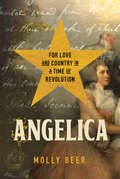
By Molly Beer. 2025
A women-centric view of revolution through the life of Angelica Schuyler Church, Alexander Hamilton’s influential sister-in-law. Few women of the…
American Revolution have come through 250 years of US history with such clarity and color as Angelica Schuyler Church. She was Alexander Hamilton’s “saucy” sister-in-law, and the heart of Thomas Jefferson’s “charming coterie” of artists and salonnières in Paris. Her transatlantic network of important friends spanned the political spectrum of her time and place, and her astute eye and brilliant letters kept them well informed. A woman of great influence in a time of influential women (Catherine the Great and Marie-Antoinette were contemporaries), Angelica was at the red-hot center of American history at its birth: in Boston, when General Burgoyne surrendered to the revolutionaries; in Newport, receiving French troops under the command of her soon-to-be dear friend Marquis de Lafayette; in Yorktown, just after the decisive battle; in Paris and London, helping to determine the standing of the new nation on the world stage. She was born as Engeltje, a Dutch-speaking, slave-owning colonial girl who witnessed the Stamp Act riots in the Royal British Province of New York. She came of age under English rule as Angelica, the eldest daughter of the most important family on the northern part of Hudson’s River, raised to be a domestic diplomat responsible for hosting indigenous chiefs and enemy British generals at dinner. She was Madame Church, wife of a privateer turned merchant banker, whose London house was a refuge for veterans of the American war fleeing the guillotine in France. Across nationalities, languages, and cultures, across the divides of war, grievance, and geography, Angelica wove a web of soft-power connections that spanned the War for Independence, the post-war years of tenuous peace, and the turbulent politics and rival ideologies that threatened to tear apart the nascent United States In this enthralling and revealing woman’s-eye view of a revolutionary era, Molly Beer breathes vibrant new life into a period usually dominated by masculine themes and often dulled by familiarity. In telling Angelica’s story, she illuminates how American women have always plied influence and networks for political ends, including the making of a new nation.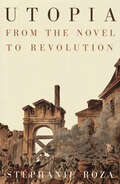
By Stéphanie Roza. 2025
THE TRANSFORMATION OF UTOPIA IN THE FRENCH REVOLUTION, FROM A ROMANTIC IDEAL TO A POLITICAL OBJECTIVEUntil the Age of Enlightenment,…
utopia was a popular literary genre, but without concrete political effects. However, in the decades leading up to 1789, its status gradually changed from an entertaining thought experiment to a socialist project. Imagining the ideal city took on the task of articulating revolutionary transformation of society towards equality and social justice.In Utopia, Stéphanie Roza explores the nascent ideal of a community of property and labour, not yet called communism, and the thinkers who engaged with it in the lead-up to the French Revolution. These philosophers included Étienne-Gabriel Morelly, a fierce critic of private property and the mysterious author of the Code de la Nature; the Abbé de Mably, a radical republican and interlocutor of Rousseau; and Gracchus Babeuf, who, from the 1780s onwards, defended the natural right to subsistence and dreamed of a more fraternal world.Together, they laid the foundations for modern socialist movements. In the crucible of the French Revolution, &‘real equality&’ became the goal of a handful of conspirators gathered around Babeuf, who had meanwhile become the &‘tribune of the people&’. The Conspiracy of Equals was considered by Marx to be &‘the first active communist party&’: the hopes and questions that ran through the group prefigured those of the militants of later periods, including today.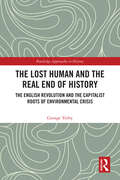
This book analyses the transformation in 16th- and 17th- century English economic life that overturned the traditional restraints of the…
medieval economy for the commercial ethos that governs the modern world, and the resulting imbalance which opened the way to the environmental breakdown of today.On the open fields and commons, the smallholders had worked closely with the land as given, with minimal intervention in natural processes. The 16th century introduced a fundamental difference of approach as the inducement of exceptional profits encouraged manipulative exploitation of the land. “Freedom of trade” from arbitrary restraints and impositions became the new economic ethos, officially established by the mid-17th-century revolution and reinforced by other changes such as the emergence of the nationstate. The “rise of science” was associated with the agriculturalist adoption of empirical method for “improvement”, and a new philosophy accorded humankind the right to degrade other species for its own ends. By focusing on the causes and effects of capitalism at its first appearance, this volume traces the environmental crisis back to the switch from an essentially universalist to a basically individualist world.This book will be of interest to scholars and students of Early Modern England, Economic Studies, and Environmental Studies.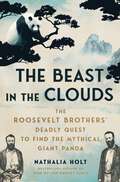
A 2025 Wall Street Journal Summer Book to Get Lost In A 2025 New York Times Nonfiction Summer Preview Pick…
&“A beautiful and powerful book.&” —Candice Millard, New York Times bestselling author &“Valuable, revelatory, and contagiously page-turning.&” —David Michaelis, New York Times bestselling author For lovers of history, nature, and adventure, the stunning true story of Theodore Roosevelt&’s sons and their 1929 Himalayan expedition to prove the existence of the beishung, the panda bear, to the western world, from the New York Times bestselling author of Rise of the Rocket Girls.The Himalayas—a snowcapped mountain range that hides treacherous glacier crossings, raiders poised to attack unsuspecting travelers, and air so thin that even seasoned explorers die of oxygen deprivation. Yet among the dangers lies one of the most beautiful and fragile ecosystems in the world. During the 1920s, dozens of expeditions scoured the Chinese and Tibetan wilderness in search of the panda bear, a beast that many believed did not exist. When the two eldest sons of President Theodore Roosevelt sought the bear in 1928, they had little hope of success. Together with a team of scientists and naturalists, they accomplished what a decade of explorers could not, ultimately introducing the panda to the West. In the process, they documented a vanishing world and set off a new era of conservation biology. Along the way, the Roosevelt expedition faced an incredible series of hardships as they disappeared in a blizzard, were attacked by robbers, overcome by sickness and disease, and lost their food supply in the mountains. The explorers would emerge transformed, although not everyone would survive. Beast in the Clouds brings alive these extraordinary events in a potent nonfiction thriller featuring the indomitable Roosevelt family. From the soaring beauty of the Tibetan plateau to the somber depths of human struggle, Nathalia Holt brings her signature &“immersive, evocative&” (Bookreporter) voice to this astonishing tale of adventure, harrowing defeat, and dazzling success.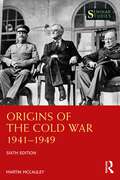
By Martin McCauley. 2026
Now in its sixth edition, Origins of the Cold War 1941–1949 offers a new perspective on the momentous conflict between…
the Soviet Union and the United States, covering the tumultuous years of 1941 to 1949.Adopting an internationalist approach, McCauley builds on the fifth edition by tracing the evolution of the post-imperial world after 1945. Chapters have been updated and expanded to include analyses of countries such as India, Pakistan and Malaya and an exciting discussion of the new Cold War history, which seeks to understand the mistakes and misperceptions of the Western allies. Moreover, this sixth edition offers readers insight into how Stalin ruled, with additional chapters delving into state secrecy and the books in Stalin’s library.Combining the latest scholarship with accessible primary sources, Origins of the Cold War 1941–1949 stands as a valuable introduction to a fascinating period and will be useful to scholars and students of modern global history and international affairs.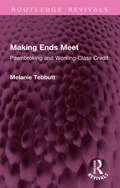
By Melanie Tebbutt. 1983
Originally published in 1983, this book filled a gap in the existing literature, because the effect of credit upon a…
family’s real income was frequently omitted in studies of living standards. The book highlights daily routines and relationships which would otherwise remain hidden, using interviews with pawnbrokers, credit personnel and their customers in the Manchester and Salford areas of the UK. These supplement unusual documentary sources such as pledge records from the inter-war years which suggest how sensitive a barometer the trade was of working-class poverty or prosperity.The pawnshop epitomized the economic dependence of women, whose critical role in domestic management and credit organization is a key theme. Yet indebtedness became the fulfilment of a damning sexual stereotype. Insecurity of income and the physical conditions of life combined to produce a distinct set of values, of which pawning was a central part. At a time when the cost-of-living crisis is affecting the global population, and pawnbroking in the UK is on the increase, this book has an enduring relevance.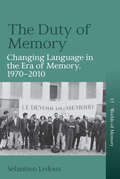
By Sébastien Ledoux. 2025
Within France, the expression “duty of memory” (le devoir de mémoire)speaks to a complex and ever-evolving relationship with the past.…
Emerging in the 1970s, this term raised questions about memorialization which dominated public debates in the 1990s, highlighting France’s entanglements with colonialism and the Holocaust. Drawing on a variety of interviews, archival sources, and data surveys, author Sébastien Ledoux spotlights how the trajectory of this term offers a lens for understanding contemporary societies’ relationship with the past on a global scale.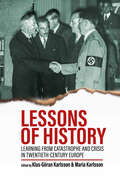
By Klas-Göran Karlsson and Maria Karlsson. 2025
Historical lessons are useful or even necessary for our guidance and orientation in time. These lessons, however, have often been…
overlooked in historical reflections on watershed moments, such as genocides, treaties, and global movements. Focusing on how cataclysmic events, primarily within Central and Eastern Europe, have been transmitted across borders and generations, this volume interrogates how the theory of historical lessons has evolved, ultimately providing a useful framework for understanding contemporary conflicts and issues. Spanning topics from the mediation of history within film to the influence of historical oppression on student activism, this volume re-evaluates historiography’s potential for analyzing the past and engaging with the present.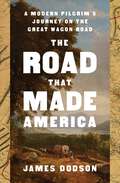
By James Dodson. 2025
In the bestselling tradition of Rinker Buck&’s The Oregon Trail and Tony Horwitz&’s Confederates in the Attic, The Road That…
Made America is a lively, epic account of one of the greatest untold stories in our nation&’s history—the eight-hundred-mile long Great Wagon Road that 18th-century American settlers forged from Philadelphia to Georgia that expanded the country dramatically in the decades before we ventured west.Little known today, the Great Wagon Road was the primary road of frontier America: a mass migration route that stretched more than eight hundred miles from Philadelphia to Augusta, Georgia. It opened the Southern frontier and wilderness east of the Appalachian Mountains to America&’s first settlers, and later served as the gateway for the exploration of the American West. In the mid-1700s, waves of European colonists in search of land for new homes left Pennsylvania to settle in the colonial backcountry of Maryland, Virginia, and the Carolinas. More than one hundred thousand settlers made the arduous trek, those who would become the foundational generations of the world&’s first true immigrant nation. In their newly formed village squares, democracy took root and bloomed. During the Revolutionary War, the road served as the key supply line to the American resistance in the western areas of the colonies, especially in the South. Drawing on years of fieldwork and scholarship by an army of archeologists, academics, archivists, preservationists, and passionate history lovers, James Dodson sets out to follow the road&’s original path from Philadelphia to Georgia. On his journey, he crosses six contiguous states and some of the most historic and hallowed landscapes of eastern America, touching many of the nation&’s most sacred battlefields and burying grounds. Due to its strategic importance, military engagements were staged along the Great Wagon Road throughout North America&’s three major wars, including the early days of the bloody French and Indian conflict and pivotal Revolutionary War encounters. In time, the Great Wagon Road became America&’s first technology highway, as growing roadside villages and towns and cities became, in effect, the first incubators of America&’s early Industrial age. The people and ideas that traveled down the road shaped the character of the fledgling nation and helped define who we are today. Dodson&’s ancestors on both sides took the Great Wagon Road to Maryland and North Carolina, respectively, giving him a personal stake in uncovering the road&’s buried legacy. An illuminating and entertaining first-person history, The Road That Made America restores this long-forgotten route to its rightful place in our national story.
By Megan C. Reynolds. 2025
A comprehensive and thought-provoking investigation into one of the most polarizing words in the English language.Few words in the English…
language are as misunderstood as “like.” Indeed, excessive use of this word is a surefire way to make those who pride themselves on propriety, both grammatical and otherwise, feel compelled to issue correctives.But what the detractors of this word fail to understand is its true function and versatility—as an exclamation, a filler of space, a means of subtle emphasis, and more. “Like” may have started out as slang, but it is now an intrinsic component of fun, serious, and altogether nurturing communication. And like any colloquialism, the word endears the speaker to its audience; a conversation full of likes feels more casual, despite its content.In this book, culture writer and editor for Dwell magazine Megan C. Reynolds takes us through the unique etymology and usage of this oft-reviled word, highlighting how it is often used to undermine people who are traditionally seen as having less status in society—women, younger people, people from specific subcultures—and how, if thought about differently, it might open up a new way of communication and validation. Written in a breezy yet informative and engaging style, this is a must-read for anyone who considers themselves a grammarian, a lover of language, and an advocate for the marginalized in discussions of cultural capital, power, and progress.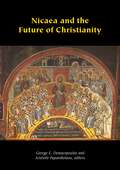
By George E. Demacopoulos and Aristotle Papanikolaou. 2025
Commemorating the 1700th anniversary of the Council of Nicaea, this volume offers an original examination of the enduring impact of…
the single most famous gathering of Christians since the apostolic ageDespite the longstanding historical and theological study of the Council of Nicaea, several central questions remain. Was Nicaea a theological event or a political one? What does it mean if it was both? Was Constantine’s intervention without precedent, or was he simply continuing a long-standing role of a Roman emperor who was responsible for leading a religious cult (albeit now for a different faith tradition)? And what about the actual theological debates of Nicaea and our ability to understand them? Scholars might never exhaust this avenue of inquiry, despite the numerous studies in recent decades.For many scholars and Christian activists today, the significance of Nicaea centers around the idea of conciliarity and what this has meant, both historically and theologically, for the Christian community. Why and how did Nicaea become foundational for thinking that the church operates in a conciliar manner? How did that work historically in different parts of the Christian world? And how should it work today?Nicaea and the Future of Christianity offers a fresh, globally-diverse, ecumenically-minded approach to these questions with an impressive collection of both senior and junior scholars, reflecting a diversity of views within the Orthodox, Catholic, and Protestant traditions. The great benefit of this wide-ranging approach lies precisely in its ability to see the many ways in which Nicaea continues to speak to the future of Christianity.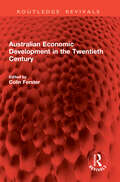
By Colin Forster. 1970
First published in 1970, Australian Economic Development in the Twentieth Century analyses aspects of Australian economic development in the twentieth…
century and places them in historical and international perspective. In Australia, the nineteenth century has been studied much more intensively than the twentieth, and in this latter period the long-run examination of almost any economic topic must break new ground. The main economic histories of the period were written either before the Second World War or come close to general history. Earlier works have naturally dated, and little has been done to integrate the periods before and after the war.The book takes a step towards filling a wide gap in our understanding of Australian development and covers the period from the depression of the 1890s right up to the 1960s. It is the product of a team of Australia’s economic historians working together, but each sovereign on his own special subject. This volume will appeal not only to economic historians but to a wider public interested in Australia’s history.